Crucifixion
THE CRUCIFIXION
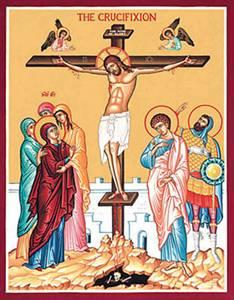 Objectives:
Objectives:
- Children should be able to say the word “crucifixion” and know that it means to be nailed to a cross.
- Children should know the story of Jesus’s crucifixion and be able to tell it.
- Children should be able to identify the characters in the icon and their meaning.
Possible Lesson Plan:
- Open with prayer.
- Read the story of Jesus’s arrest, trial, crucifixion, and burial in the Beginner’s Bible, pages 437-445, the Children’s Bible Reader, pages 242-255, or the Read with Me Bible, pages 382-397. Supplement with the Golden Children’s Bible, pages 448-455, if desired, or the Arch book, “The Man Who Carried the Cross for Jesus”. Where was Jesus when He was arrested? What was He doing? What were the disciples doing? How did Judas betray Him? Peter lied about knowing Jesus how many times? Before when? Who was the high priest? The soldiers put what on Jesus? Who condemned Jesus to death? How did He die? Who carried the cross? Why? What are some of the things Jesus said on the cross before He died? Who was crucified with Jesus? What happened when Jesus died? Who took Jesus’s body to his own tomb? Review the story with the icon, identifying the people. What role did each play?
3. True/False Questions:
True False
Jesus was arrested in the Garden of Gethsemane. Jesus was arrested at home.
Judas betrayed Jesus with a kiss. Judas hit Jesus with a sword.
Peter denied knowing Jesus 3 times. Peter denied Jesus 20 times.
The soldiers put a crown of thorns on Jesus. The soldiers gave Jesus gold.
Pontius Pilate judged Jesus. Moses judged Jesus.
Joseph of Arimathea buried Jesus. Pilate buried Jesus.
Add the Cross to your timeline:
- We celebrate the Crucifixion on Holy Friday. We sing on Thursday about the “Wise Thief”. The story is in the Golden Children’s Bible, page 353, or the Arch book “The Thief Who Was Sorry”. Which thief was wise and why? We also sing on Friday about “The Noble Joseph”. Who was the noble Joseph? What did he do? Play these beautiful songs if you want with tape or CD from the bookstore. Do you remember what we do in Church on Holy Friday? (Procession, candles, the tomb.)
Review by adding several eggs to your "Resurrection Egg" carton, using the ones that you actually stressed in your lessons. There will now be more than 12....either put on top of the egg carton or start a new carton. Some suggestions would be an olive for prayer in the Garden of Gethsemane (full of olive trees), a feather for the rooster of Peter's denial, a small piece of leather for a whip, a small branch from a thorny bush like a rosebush for the crown of thorns, a nail, 3 crosses, a die for the game of the Roman soldiers, a spear, and finally a rock.
- The Cross is the symbol of the Crucifixion. Practice making the sign of the Cross until each child can do it correctly. Role play the prostrations while singing the song “Before Thy Cross”.
- Make a time line, written with readers, in pictures with small fry. Draw on it the events of Holy Week from Lazarus Saturday until Pascha, filling in each detail the children remember and jogging their memories if needed. Or make a card for each event and have the children line them up in order.
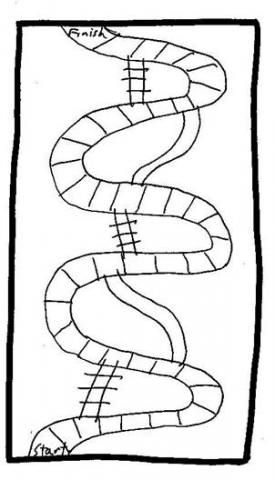
- Make a Holy Week game. Along the lines of chutes and ladders, draw a gameboard. Fill in events of Holy Week along the path, with a penalty (chute) for the bad events (betrayed by Judas, condemned by Pilate, crucified, buried by Joseph of Arimathea, etc.) and a reward (ladder) for the good events (Palm Sunday, washed disciples’ feet, prayed in Garden of Gethsemane, etc.) Have the children choose the most important events from their time line or cards to include on their game board and place them in order. Use dice to play the game; no dice? Tear 6 strips of paper and write a number from 1-6 on each and draw a paper when it’s your turn.
- Or try a Holy Week booklet. Use pictures of icons to color, or the booklet pages after the icons + a description of each day’s events. Decorate a cover and back of construction paper, and bind with ribbon or yarn.
- Time very limited? Color a Holy Week "People Teller" to review all the important people in the drama:Holy Week People Teller
- Cut out the Holy Week People Teller along the outside line
- With the printed side up, fold the square in half horizontally and then vertically, open the folds.
- Turn the square over.
- Fold each corner over so they meet in the middle, do not let them overlap.
- Leave the square folded, and flip the square over.
- Now fold the corners into the center – make sure they do not overlap.
- Fold the entire square in half and poke your thumbs and forefingers in under the flaps.
- Bring your fingers together so the People Teller forms a peak – you are ready to play!
- Can you name all the people according to the clues given?
- Close with prayer.
HOLY WEEK BOOKLET
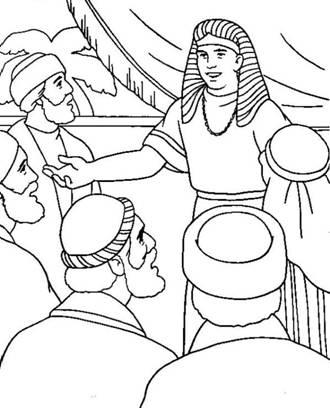
Holy Monday: St. Joseph the Patriarch
A symbol and pre-figuring of Jesus in the Old Testament. You can read St. Joseph’s story at the end of the book of Genesis in the Old Testament. As we think about St. Joseph today, we remember that the great events of the Old Testament become realities in the New.

Holy Tuesday: The Parable of the Ten Virgins
We must make our decision to follow Christ now and not at some point future so that we may watch, pray and be prepared when we are called to join Christ. Our goal should be to seek out the will of God and hold onto his teachings in joyful anticipation of meeting Him.
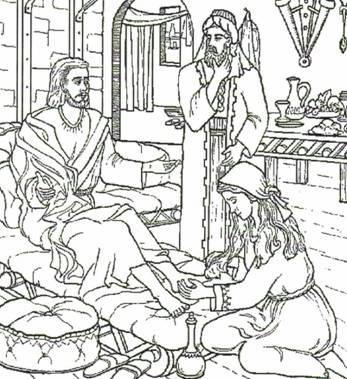
Holy Wednesday: The Betrayal of Christ by Judas and the Sinful Woman
On Holy Wednesday, the Church urges us to think about two people, the sinful woman who poured oil on Jesus’ feet and Judas. The woman came to know Jesus as her savior while Judas chose to betray Him. Judas lost his freedom in Christ, not because he sinned but because he refused to believe that he could be forgiven. The woman, believing that she could be free of sin asked forgiveness and was set free. We must remember that we ourselves deny Jesus when we sin, just like Judas, but we do not have to perish like Judas. We can be like the woman, ask Jesus to forgive us and be set free from our sin.
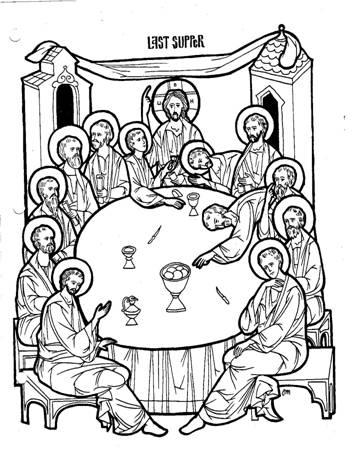
Holy Thursday: The Mystical Supper
At the Mystical Supper, Jesus gave us a new idea of what food and drink means by saying, “Take, eat; this is my Body. Drink of it all of you; for this is my Blood of the New Covenant” (Matthew 26:26-28). These words spoken by our Lord forever identify Jesus with the ordinary human food of bread and wine. We know that our bodies need food in order to live. In the Eucharist, the bread and wine mystically become the body and blood of Christ. God is able to feed us with Himself while at the same time he remains different from us. God lets us share His divine nature in the Eucharist.
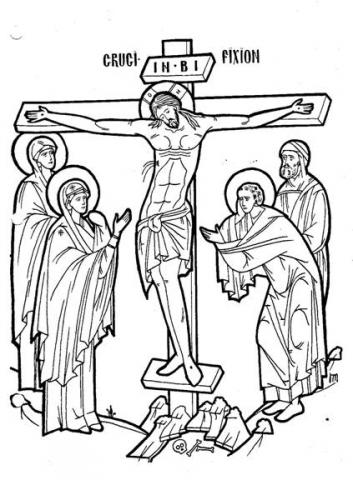
Holy Friday: The Death of Christ on the Cross
On this day, we remember the sufferings of Christ: the nails, the thorns, the spear and death. The day of Christ’s death revealed all the sin that has dirtied our world since its creation. Christ is called, “The New Adam” and in Him there is no sin and no death. Christ chose to trade his life for death and in this way was able to destroy death forever. He chose to suffer greatly in being apart from his Father “My God, my God, why hast Thou forsaken Me!” (Mark 15:34). He then took on the scary experience of dying and said “It is finished” (John 19:30). When Jesus spoke those words, He let everyone know that He was in control of death and that his work to save us was being completed. Death is no longer a final ending to our lives, but a door opening into eternal Life with God, our own Pascha.